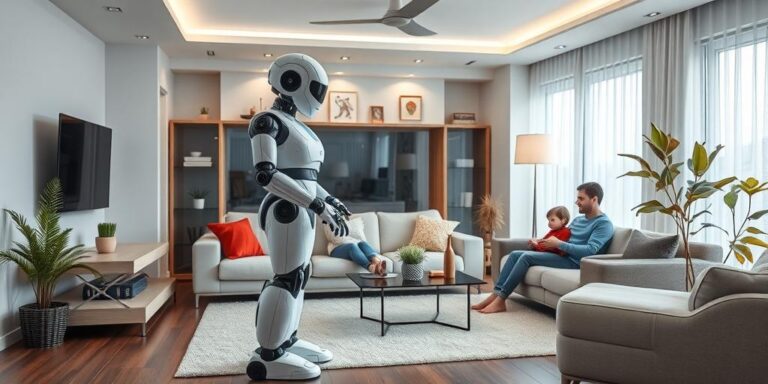Personal Robots: Companions, Assistants, or Novelties? (2028)
The year is 2028. Personal robots have moved beyond the realm of science fiction and into our homes. But are they the revolutionary companions and assistants we were promised, or are they simply expensive novelties? This article delves into the current state of personal robotics, examining their capabilities, limitations, and potential impact on our lives.
The Rise of Personal Robots
Over the past decade, advancements in artificial intelligence, machine learning, and robotics have led to the development of increasingly sophisticated personal robots. These machines are designed to interact with humans, perform tasks, and provide companionship. From cleaning and security to education and entertainment, personal robots are finding their way into various aspects of daily life.
Capabilities and Applications
1. Home Assistance:
- Cleaning: Robotic vacuum cleaners and mops have become commonplace, automating a tedious chore.
- Maintenance: Robots can now handle tasks like lawn mowing, pool cleaning, and gutter maintenance.
- Smart Home Integration: Personal robots can control smart home devices, manage energy consumption, and provide security monitoring.
2. Companionship:
- Social Interaction: Robots are designed to engage in conversations, play games, and offer emotional support.
- Elderly Care: Robots can assist seniors with medication reminders, mobility support, and emergency alerts.
- Child Education: Robots can provide interactive learning experiences, tutoring, and educational games.
3. Entertainment:
- Gaming: Robots can participate in board games, video games, and interactive storytelling.
- Music and Dance: Robots can play music, dance, and even compose original tunes.
- Creative Expression: Robots can assist with artistic endeavors, such as painting, drawing, and writing.
Limitations and Challenges
Despite their advancements, personal robots still face significant challenges:
- Cost: High development and manufacturing costs make personal robots expensive, limiting their accessibility to a niche market.
- Technological Constraints: Current AI and machine learning technologies have limitations in terms of natural language understanding, adaptability, and problem-solving.
- Ethical Concerns: Issues such as privacy, data security, job displacement, and the potential for misuse raise ethical questions about the widespread adoption of personal robots.
- Social Impact: Concerns about the impact on human interaction, social isolation, and the potential for over-reliance on robots require careful consideration.
Future Trends and Predictions
Looking ahead, several trends are shaping the future of personal robotics:
- AI and Machine Learning Advancements: Continued progress in AI and machine learning will enhance the capabilities of personal robots, enabling them to perform more complex tasks and interact more naturally with humans.
- Decreasing Costs: As technology matures and production scales increase, the cost of personal robots is expected to decrease, making them more accessible to a wider range of consumers.
- Integration with IoT: Personal robots will increasingly integrate with the Internet of Things (IoT), creating interconnected ecosystems that enhance convenience and efficiency.
- Specialized Applications: The development of robots tailored to specific needs and industries, such as healthcare, education, and manufacturing, will drive innovation and growth.
Conclusion
Personal robots in 2028 represent a blend of promise and challenge. While they offer numerous potential benefits in terms of assistance, companionship, and entertainment, they also present limitations and ethical concerns that must be addressed. Whether they become indispensable companions, helpful assistants, or mere novelties will depend on technological advancements, cost reductions, and thoughtful consideration of their social and ethical implications. As we move forward, it is essential to strike a balance between innovation and responsible development to ensure that personal robots enhance rather than detract from our lives.




